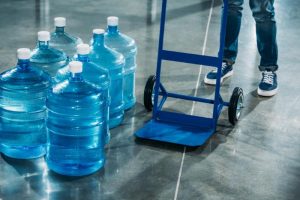Things Go Wrong With Water Softeners
Water softeners are a great way to make your home’s water soft and easier to clean. They help remove hard minerals from the water, which makes it softer and easier to clean with soaps and detergents.
(Looking for a water filtration system installer? Contact us today!)

However, sometimes things go wrong with water softeners and it’s necessary to have them fixed right away. There are several common issues that water softeners encounter, and some of these problems are easy to fix while others are a little more complex.
Errors that signal the unit is not regenerating
One of the most common problems with water softeners is that they don’t regenerate at all. This is usually caused by a broken timer or some sort of error in the system. It may even be caused by a faulty valve or switch. You can check if the regeneration cycle is running by setting a timer and listening for it to start at that time.
In most cases, this problem is not a huge deal as it can be easily solved with a quick call to the water treatment dealer. If the regeneration cycle is still not working, it’s a good idea to check the brine tank for any signs of clogs or blockages that might be preventing the salt from dissolving.
The water in the resin tank can clog with sediment, iron, manganese, or other minerals that are found naturally in your home’s water. This is called fouling and can lead to reduced softening capacity, discoloration of the water, and possibly an unpleasant taste or rotten egg smell.
This is a common issue that affects new softeners and those that have been out of service for a while. Typically, it can be solved by removing any clogs or thoroughly cleaning the resin tank with a commercial cleaner that can be purchased at any hardware store.
The brine tank flooded with water
Another common problem that many homeowners experience is that their brine tank is full of water, which causes it to run out of salt or have a leak. This can happen due to a number of factors, but it’s often caused by a breakage in the water entry valve. If the valve is broken, you can simply replace it to solve this issue.
Motor failure
Like any other electrical device, water softeners are prone to having their motors fail from time to time. If the motor fails, you can’t use your softener and it will have to be replaced.
A clogged injector or brine line can also hinder the regeneration process. It can also cause a malfunctioning venturi valve that is unable to release the correct amount of water into the brine tank.
Leaks in the water lines, valves, or tanks can be a bit tricky to detect, but if they’re found it’s usually an easy fix. If you’re not sure how to inspect your system, consider hiring a professional plumber who is experienced in the installation and maintenance of softeners.

